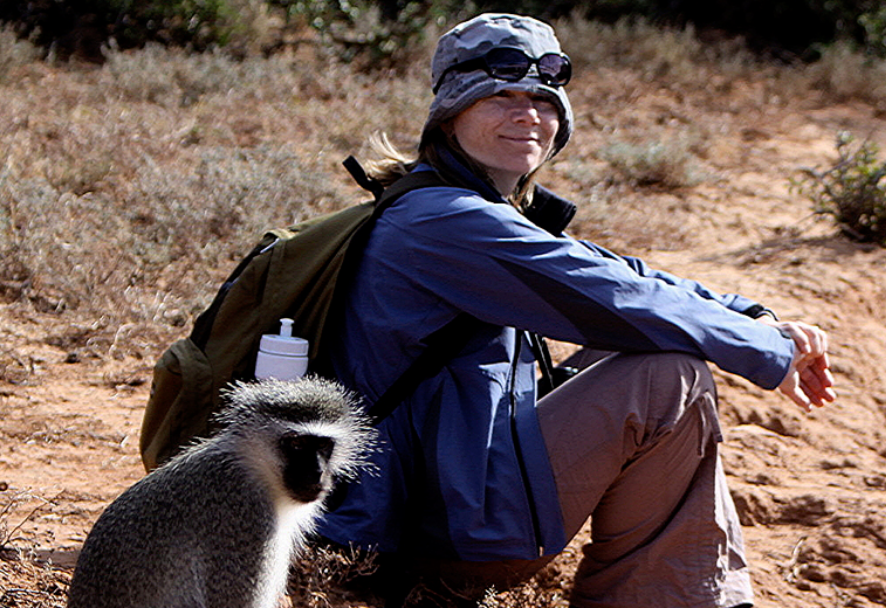Three University of Lethbridge researchers have received $2.4 million in new and renewed funding through the Canada Research Chairs (CRC) program.
Dr. Matthew Bogard, an assistant professor in the Department of Biology, has been named a Tier 2 Canada Research Chair in Aquatic Environments. Drs. Andrew Iwaniuk, Tier 2 Canada Research Chair in Comparative Neuroanatomy, and Louise Barrett, Tier 1 Canada Research Chair in Cognition, Evolution and Behaviour, have received renewed funding.
Bogard joins the U of L on July 1 from the University of Washington where he’s been doing post-doctoral work. He grew up in La Ronge, Saskatchewan, obtaining a bachelor’s at the University of Saskatchewan, a master’s at the University of Regina and a PhD at the Université du Québec à Montréal. As a biogeochemist, he studies how elements like carbon, nitrogen and phosphorus cycle through aquatic ecosystems.

“I want to use the Oldman River basin as a model system to understand how watershed disturbances impact the functioning of the biogeochemistry of aquatic networks,” says Bogard. “I also want to understand how humans are changing the food web and what impact that has on the biogeochemistry. If we’re adding too many nutrients, for example, or changing how the water flows through the landscape, that will impact the functioning of the ecosystem.”
The Oldman River watershed is an ideal place to work, Bogard says, because of its proximity to the University. The area provides an environment that encompasses the Rocky Mountains and the Prairies, thus providing opportunities to work across different landscapes and human disturbances. These include climate effects on headwaters, agriculture, irrigation and urbanization and Bogard will be looking at how these factors interact at the watershed scale.
“I sense there’s a lot of interest in the sustainability of the Oldman River watershed from diverse perspectives,” says Bogard. “It has a more complicated management portfolio.”
With the renewal of her Tier 1 CRC, Barrett will extend her research on humans and non-human primates to look at how these two groups cope with climate change.
“I am very interested in the notion of the Anthropocene, this new geological epoch that recognizes that humans are a major geological force,” says Barrett. “We have changed the climate and patterns of land use and even the structure of the Earth’s crust. I am interested in understanding more about whether and how humans and other animals can adjust to these vast changes.”

Part of the research looks at a population of vervet monkeys in South Africa. Barrett has studied the group since 2008 and, in 2013, she and her students started a cohort study following the lives of every infant born in their study groups. In the years ahead, the researchers will be able to learn more about the factors that make a monkey well adjusted, well adapted and able to cope with the social and ecological world around them.
The aspect of the research dealing with humans is centred in Samoa and Nunavut. The Samoan islands are vulnerable to rising sea levels and the majority of people and infrastructure reside in coastal areas. Nunavut is experiencing receding sea ice and warming temperatures. Food security is a big issue in Nunavut, where people rely on hunting to ensure they have a regular supply of food.
“We’ve been looking at whether women’s reproductive decisions — when they choose to have children and how many children they decide to have — reflect their experience of risk in the environment,” says Barrett. “Overall, we’re looking at primate life history and human life history and trying to see how we cope with big changes in our environments.”
Iwaniuk’s research focuses on how and why the anatomy of animals’ brains differ from species to species. His renewed funding will allow him to continue to build and analyze his brain collection — the largest collection of bird brains in the world — through international collaborations and state-of-the-art imaging technology.

Some of his research will involve reconstructing the brains of extinct and endangered species to provide a more accurate view of these species’ abilities to find food and sense the world around them. Using computerized tomography (CT) scans, similar to what human patients receive in hospitals, Iwaniuk and his collaborators obtain high-resolution images of the skulls and heads of these species from which they reconstruct and measure sensory regions of the brain.
The first of these projects will focus on the night parrot, a highly secretive, nocturnal, green parrot found only in the arid interior of Australia. Almost nothing is known about the behaviour of the night parrot, but working with Australian scientists to reconstruct its brain from CT scans, Iwaniuk will provide insights into its senses of sight and smell, which are important for managing this endangered species and its habitat.
Working with researchers in Sweden, Iwaniuk and his undergraduate students will also explore what makes the chicken brain different from its wild relative, the junglefowl.
“In doing so, we might finally be able to answer whether chickens are truly bird-brained after all,” says Iwaniuk.
